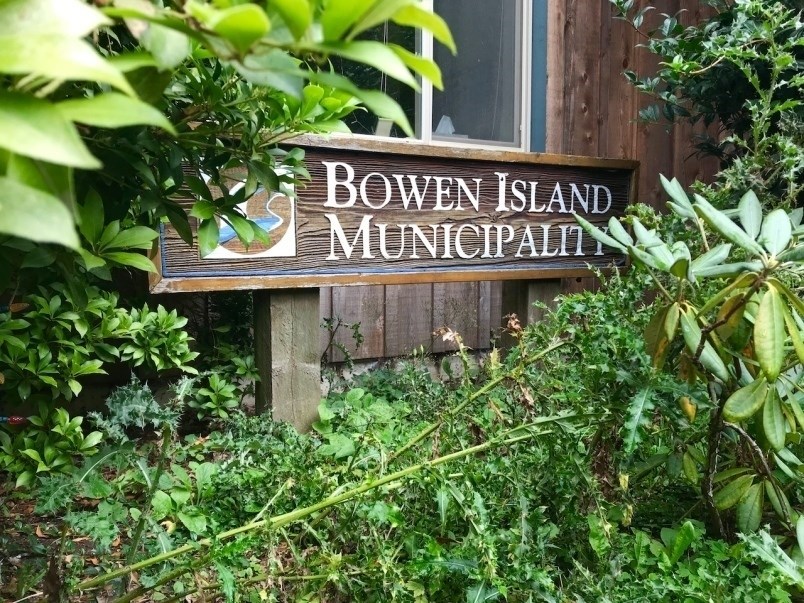The housing crunch on Bowen is dire. Bowen Island Municipality’s 2020 housing needs assessment found that 84% of residents cannot afford to buy a new single-family home and single-family homes are 90% of the housing stock.
There is a municipal committee dedicated to the housing issue – the Housing Advisory Committee. The HAC brought forward a suite of “high level” general recommendations to mayor and councillors Oct. 15 in a joint committee of the whole meeting. The recommendations – listed in general order of difficulty with easiest at the top – are as follows. (Note that council gave directions to a municipal committee to further research topics, these aren’t policy shifts.)
Setting community-wide housing targets: “All sorts of different people need different kinds of housing, that we’re struggling to provide at the moment,” explained HAC chair Robyn Fenton – this isn’t just about affordable housing, but diverse housing too.
Coun. Maureen Nicholson noted that given the current island population, the 900-odd new homes that could be built under already passed rezonings (some of those developments many years old), and if the capacity of Bowen is about 7,000 people, that leaves room for a further 1,000 people or 400 homes. (These are very general estimates.)
Councillors agreed to the committee pursuing a preliminary review of existing data (like the housing needs assessment and the BIRCH survey a couple of years ago).
Encouraging more secondary suites: The HAC recommended looking at lowering the lot size requirement for detached secondary suites and relaxing parking requirements; considering a survey to find suites not being rented and ask why they’re not being rented; and looking at neighbourhoods where permitting more than one suite could be suitable.
“We have heard anecdotal feedback that there are some existing buildings out there that are unused,” said Fenton. “Those existing buildings that are there, that’s really low hanging fruit.”
Councillors agreed for the committee to research potential of reducing how big a lot must be before allowing a detached secondary suite.
Seeking methods to build the housing reserve fund: This includes the provincial MRDT, which can be applied to short-term rentals (but this tax hasn’t been applied on Bowen because not enough rental owners have agreed to the tax; it was also proposed during the early months of the pandemic.)
Council agreed for the committee to explore this further with the support of CFO Sheila McCutcheon.
Cluster and duplex zoning: The idea would be to look at where there could be zoning for smaller attached homes on existing lots or clusters of smaller lots rather than large lots and how such a zone would work. (Across the island, there are different kinds of zones, like Rural Residential 1 or Comprehensive Development or Rural Commercial 2.) Some other communities (like Gibsons and Maple Ridge) have created this new kind of zoning for “gentle density” – allowing more density than single-family homes in a neighbourhood – said Fenton. In the way that council has recently put out a request for expressions of interest for housing projects on a parcel of the Community Lands, BIM could invite private landowners to apply for rezonings, suggested Fenton.
Council agreed for the committee to research the creation of such zoning.
Bring in changes to Land Use Bylaw to incentivize building desired housing, like rental suites: This suggestion from the HAC involves using the LUB to make it more desirable for builders to include secondary suites in new builds – and reviewing the bylaw to see where it could be impeding certain needed housing getting built.
Fenton acknowledged that this would be a bigger project but the suggestion is more of high-level concept of how council can use the LUB as a tool, indicated Fenton.
“With the cost of building and everything on Bowen, it’s not that easy to get people to come over here and build stuff,” said Mayor Gary Ander. “We have to find a way to incentivize.”
Coun. Alison Morse noted that incentivizing isn’t money changing hands but density bonusing and the like.
Council agreed to have the committee research incentivization of land use.
Alternative modes of land tenure: This could be supporting private land owners in rezoning to accommodate tiny house villages or trailer. “So one owner owns the property, puts in the servicing and pads and then people bring in either manufactured homes, tiny houses, whatever,” explains Fenton.
“It’s simply a different mode of land tenure,” said Fenton. “It can be just as nice and just as friendly and community-based as any other thing.”
Another element to this recommendation is considering giving control of some of the Community Lands to a community land trust “that would be based in the community have board members who are from the community, and they would be then making those long-term decisions about what would go in there and what would be built,” said Fenton. “That’s again, a different form of land tenure.”
Council agreed for the committee to “research the potential of pilot projects through calls for expressions of interest; provide more information to Council about Community Lands Trust.”
Encourage attached and multi-family housing forms – “gentle density” in established neighbourhoods: (Very similar ideas and reactions as cluster and duplex zoning.)
Proactive rezoning – pre-zoning land to encourage diverse housing, taking away some of the risk for developers: An example given is the Bellringer-Purdy housing development across from the museum, where the Community Lands parcel was already zoned for housing when the developers bought it.
This would be a huge project noted councillors, so “suggest that next elected Council undertake a review of the Official Community Plan to identify appropriate lands for diverse housing types.”
Councillors also mentioned that they’ll be going into strategic planning soon, so these housing priorities could be a part of that. Also, next year is an election year, so some of the more substantive changes would be up to the next council.



.png;w=120;h=80;mode=crop)